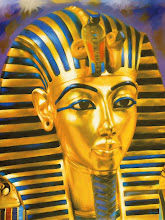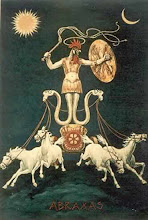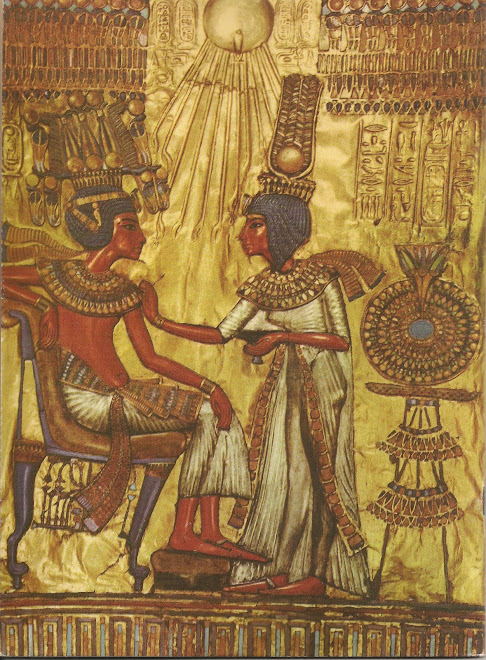segunda-feira, 10 de outubro de 2011
O Zohar (O Livro do Esplendor)
Extract Info On The Book (from Wikipedia):
The Zohar (Hebrew: זֹהַר, lit Splendor or Radiance) is the foundational work in the literature of Jewish mystical thought known as Kabbalah.[1] It is a group of books including commentary on the mystical aspects of the Torah (the five books of Moses) and scriptural interpretations as well as material on Mysticism, mythical cosmogony, and mystical psychology. The Zohar contains a discussion of the nature of God, the origin and structure of the universe, the nature of souls, redemption, the relationship of Ego to Darkness and "true self" to "The Light of God," and the relationship between the "universal energy" and man. Its scriptural exegesis can be considered an esoteric form of the Rabbinic literature known as Midrash, which elaborates on the Torah.
The Zohar is mostly written in what has been described as an exalted, eccentric style of Aramaic, which was the day-to-day language of Israel in the Second Temple period (539 BC – 70 AD), was the original language of large sections of the biblical books of Daniel and Ezra, and is the main language of the Talmud.[2]
The Zohar first appeared in Spain in the 13th century, and was published by a Jewish writer named Moses de Leon. De Leon ascribed the work to Shimon bar Yochai, a rabbi of the 2nd century during the Roman persecution[3] who, according to Jewish legend,[4][5] hid in a cave for thirteen years studying the Torah and was inspired by the Prophet Elijah to write the Zohar. This accords with the traditional claim by adherents that Kabbalah is the concealed part of the Oral Torah.
While the traditional majority view in religious Judaism has been that the teachings of Kabbalah were revealed by God to Biblical figures such as Abraham and Moses and were then transmitted orally from the Biblical era until its redaction by Shimon ben Yochai, modern academic analysis of the Zohar, such as that by the 20th century religious historian Gershom Scholem, has theorized that De Leon was the actual author. The view of non-Orthodox Jewish denominations generally conforms to this latter view, and as such, most non-Orthodox Jews have long viewed the Zohar as pseudepigraphy and apocrypha while sometimes accepting that its contents may have meaning for modern Judaism. Jewish prayerbooks edited by non-Orthodox Jews may therefore contain excerpts from the Zohar and other kabbalistic works,[6] even if the editors do not literally believe that they are oral traditions from the time of Moses.
The modern evolutionary view according to the authentic (from the sages) wisdom of Kabbalah, interprets the Zohar as a technology for people who are seeking meaningful and practical answers about the meaning of their lives, the purpose of creation and existence and their relationships with the laws of nature. [7][8]
Contents
The Book of Zohar includes parts and chapters in conformance with the weekly chapters of the Torah:[15]
The Book of Beresheet (Genesis): Beresheet, Noach, Lech Lecha, Vayera, Chaiey Sarah, Toldot, Vayetze, Vayishlach, Vayeshev, Miketz, Vayigash, Vayichi.
The Book of Shemot (Exodus): Shemot, Vayera, Bo, Bashalach, Yitro, Mishpatim, Terumah (Safra de Tzniuta), Tetzaveh, Ki Tissa, Veyikahel, Pekudey.
The Book of Vayikra (Leviticus): Vayikra, Tzav, Shmini, Tazria, Metzura, Acharey, Kedushim, Emor, Ba Har, Bechukotay.
The Book of Bamidbar (Numbers): Bamidbar, Naso (Idra Raba), Baalotcha, Shlach Lecha, Korach, Chukat, Balak, Pinchas, Matot.
The Book of Devarim (Deuteronomy): Devarim, Ve Etchanen, Ekev, Reah, Shoftim, Ki Titze, Ki Tavo, Nitzavim, Vayelech, Ha’azinu (Idra Zuta), V'Zos HaBercha.
( http://en.wikipedia.org/wiki/Zohar )
Marcadores:
books,
cabala,
editorial estampa,
esoterism,
jewish esotericism,
jewish mysticism,
kabbalah,
kabbalah texts,
mysticism
Subscrever:
Enviar feedback (Atom)



.jpg)
.jpg)









+001.jpg)


+001.jpg)
+001.jpg)
+001.jpg)






+001.jpg)
+001.jpg)





+001.jpg)



+001.jpg)

+001.jpg)

+001.jpg)
+001.jpg)
.jpg)



Sem comentários:
Enviar um comentário
Nota: só um membro deste blogue pode publicar um comentário.